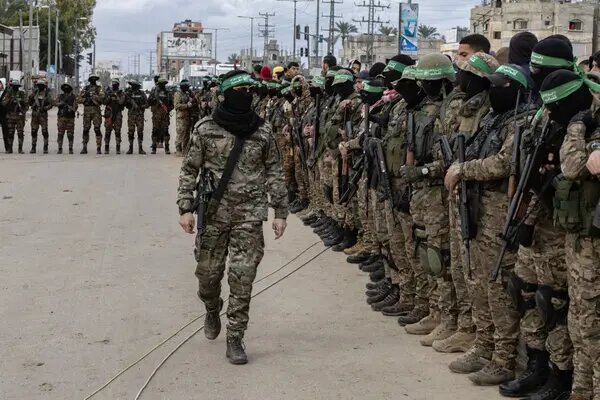Hamas takes on Israel’s mercenaries in Gaza

TEHRAN – More than a week after the October 10 ceasefire, Gaza continues to face sustained military pressure, with Palestinians remaining under severe threat from Israel’s ongoing operations. Although Israeli forces have partially withdrawn from some residential areas in central Gaza, local armed groups, linked to Israel’s Shin Bet security agency, continue to target resistance fighters and civilians alike. These actions undermine prospects for lasting peace and highlight Israel’s continued efforts to destabilize Gaza from within.
Historically, such groups have been accused of collaborating with Israel to disrupt internal security in Gaza. Reports indicate that they have participated in assassinations of resistance commanders, infiltration of communities, and the sowing of chaos throughout Israel’s two-year war on the enclave. Over the past week, Hamas security forces have confronted these armed collaborators, resulting in dozens of fatalities on both sides.
The Interior Ministry in Gaza has identified “outlaw gangs” from the Doghmush clan as responsible for attacks against resistance fighters following the ceasefire. Israel has a long-standing record of supporting local militias as a means to weaken organized resistance and undermine Hamas’s governance.
Among these groups is the Popular Forces, led by Yasser Abu Shabab of the Tarabin Bedouin tribe. While Israel has accused Hamas of stealing humanitarian aid, investigations indicate that the Popular Forces were involved in looting and selling food supplies intended for civilians. Clashes between Hamas and the Popular Forces have been reported repeatedly since September 2024, with Hamas accusing them of collusion with Israeli forces.
Another key figure in this network, according to Al Jazeera, is Hussam al-Astal, a former Palestinian Authority security officer previously accused of collaborating with Israel in the 1990s. Al-Astal leads a group calling itself the “Strike Force Against Terror,” which has reportedly coordinated with the Popular Forces and engaged in confrontations with Hamas in recent weeks.
Israel’s reliance on these proxy forces underscores the limits of its military and political strategy in Gaza. Despite two years of conflict, Hamas continues to maintain control over key areas, demonstrating the resilience of the Palestinian resistance. Unable to defeat Hamas through direct military action, Israel has increasingly relied on militias to sow division, weaken organized resistance, and undermine governance. Rather than signaling strength, this strategy reflects strategic frustration and acknowledgment of Hamas’s enduring presence.
Since the conflict began on October 7, 2023, nearly 68,000 Palestinians have lost their lives, highlighting the scale of devastation and the profound human cost of Israel’s campaign.
The humanitarian situation remains dire. Even a week after the ceasefire, Palestinians in Gaza face acute shortages of food, water, and essential medical supplies. Restrictions imposed by Israel continue to impede aid deliveries, in violation of the truce, and exacerbate civilian suffering. The World Food Program reports delivering approximately 560 tons of food per day since the ceasefire—far below the required volume. “We’re still below what we need, but we’re getting there… The ceasefire has opened a narrow window of opportunity, and WFP is moving swiftly to scale up assistance,” spokesperson Abeer Etefa said. While the agency claims it has sufficient supplies to feed all of Gaza for three months, access remains highly restricted.
Despite the ceasefire, military operations persist. Al Jazeera reported on October 25 that Israeli forces shelled the Shujayea neighborhood in northern Gaza, killing three Palestinians the day prior, with at least two dozen killed since the ceasefire began. Israeli officials have delineated a “yellow line” marking the boundary of their withdrawal, and military chief Israel Katz warned that crossing it would prompt live fire. Even before the line was fully marked, several Palestinians were shot nearby. Israeli forces continue to control approximately 60 percent of Gaza.
For many Palestinians, the ceasefire has done little to alleviate suffering. For Hamas and other resistance factions, Israel’s reliance on collaborators and proxy forces is a sign not of strength, but of military exhaustion and strategic failure in the face of a resilient and organized Palestinian resistance.
